About The Musée Dawson Trail Museum
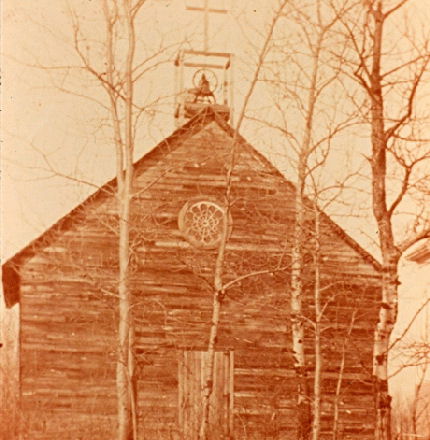 The wooden structure, resting on a full basement of field stone and mortar was built between 1910 and 1913 to replace a small wooden church on the site.
The wooden structure, resting on a full basement of field stone and mortar was built between 1910 and 1913 to replace a small wooden church on the site.
The Enfant-Jésus Roman Catholic Church served mass to the community of Richer, Manitoba until 1995 when it was closed by the Archdioceses of Manitoba due to shrinking attendance.
Since the closing of the parish, The Enfant-Jésus Heritage Site Corporation has seen to the maintenance of the building and site, and through major fundraising efforts and thousands of man hours has preserved the building for future generations to enjoy.
In 2008 the RM of Sainte-Anne, Manitoba designated the Church of the Enfant-Jésus Heritage Site a Municipal Heritage Site, paving the way for the transition of the church to a rural museum in the summer of 2015.
Officially renamed The Dawson Trail Museum in the summer of 2015, the site features a Romanesque style church, a century old cemetery, artifact displays and guided tours.
Located in the heart of the town of Richer, Manitoba, just 30 minutes east of Winnipeg off of the Trans Canada Highway, this historical gem offers you a window on the history of the development of southeastern Manitoba.
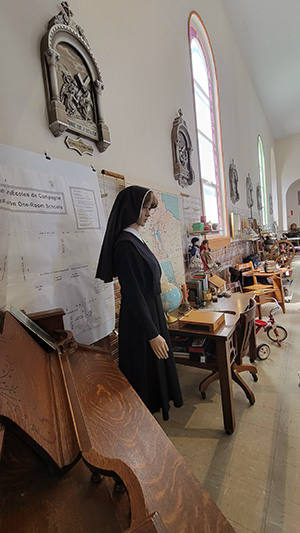
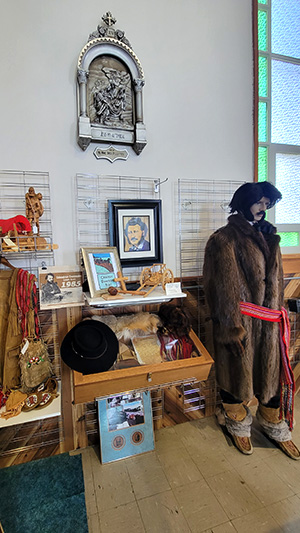
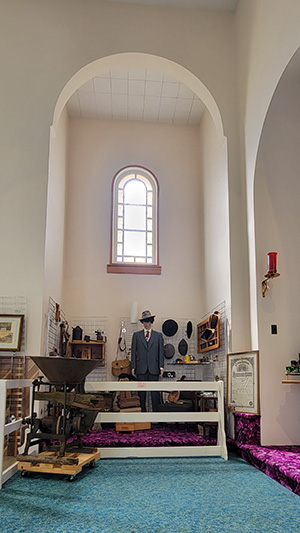
Our rural museum is an active member of the Association of Manitoba Museums.
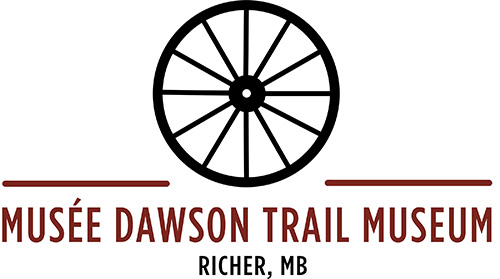 The Story Behind Our Logo
The Story Behind Our Logo
The Musée Dawson Trail Museum has redesigned the logo to incorporate the history, culture, and communities along the Dawson trail and of the historic Church of the Enfant-Jésus Heritage Site.
One of the most important changes to our logo has been the inclusion of both the French and English languages. Many communities along the historic Dawson Trail have a strong connection to the French language and culture and it is important for that to be represented by the Musée Dawson Trail Museum.
The horizontal line represents the historic Dawson Trail, completed in 1871, with the corduroy road sections that were an essential part of the trail when crossing the swampy sections. The trail is known as the road to open the West by linking Eastern Canada to the prairies, specifically Thunder Bay to the Red River. It weaved its way over land, through swamps and on water to provide a route for immigration, communication, and colonization. The construction of the Trail is steeped in history with its connection to the Métis Red River Resistance, a sanctuary for the French speaking Roman Catholics and Mennonites and its origins as a First Nation route.
The 12-spoked wheel represents the Red River cart. These carts were a primary source of transportation for the Red River Métis on the Prairies. They were used to carry heavy loads across great distances and eventually replaced the York boats for this reason. They were made entirely of wood and tied together with rope, leather, or sinew which made them easy to repair. Due to the materials used to craft the carts it also made them buoyant, so they were easy to move across rivers and streams. The Métis would use horses, oxen, or ponies to pull the carts and during the winter months they were easily converted to sleighs. These carts were a symbol of craftsmanship with the Métis culture and demonstrated their strong entrepreneurial spirit. One of these carts can be seen on display in front of the Musée Dawson Trail Museum.
The color, Heritage Red, was selected as it is the current colour of the trim of the Museum. It is also the colour used when the first structure was first built in 1913 and being used as the Church of the Enfant-Jésus Heritage Site.





